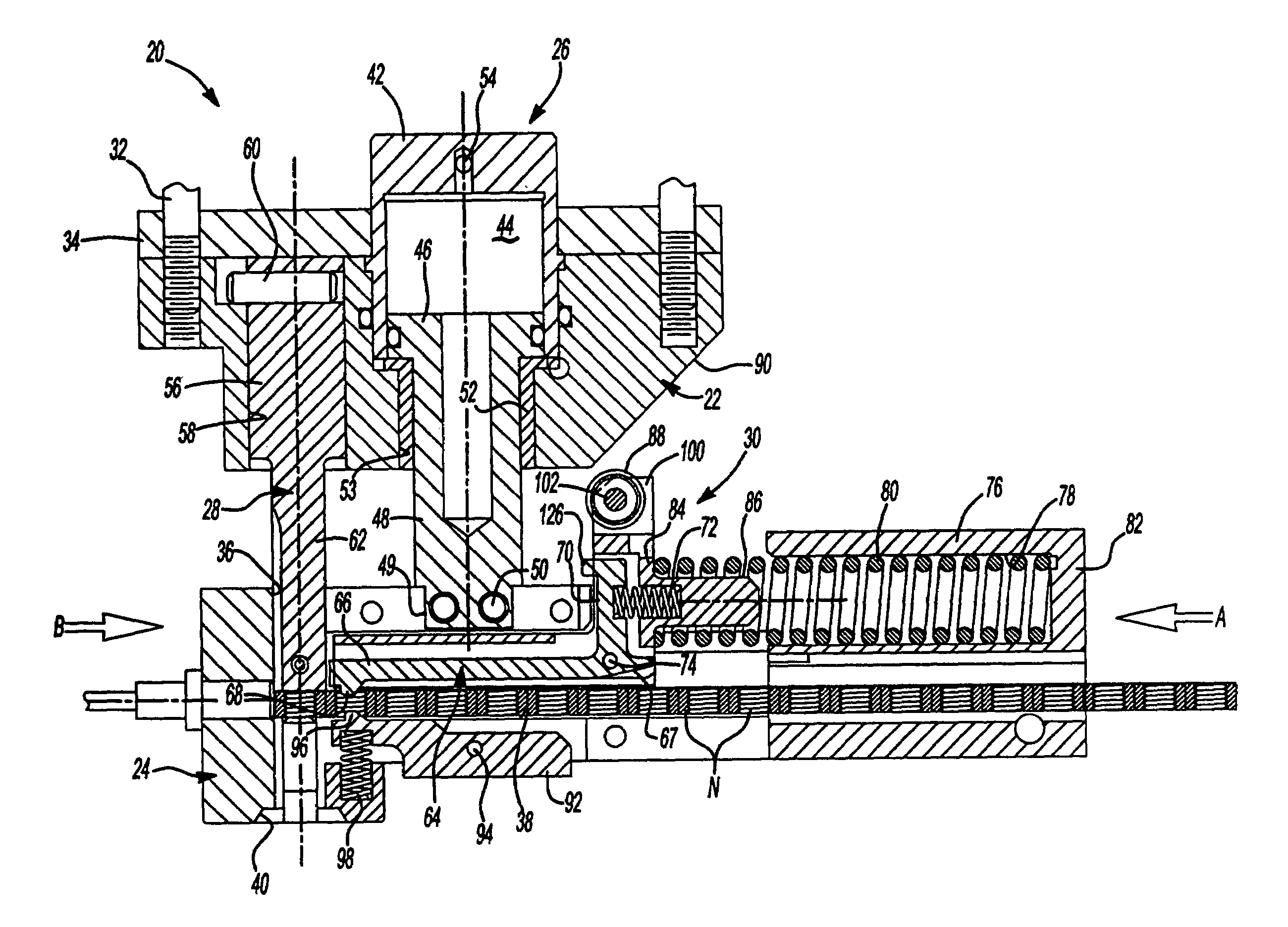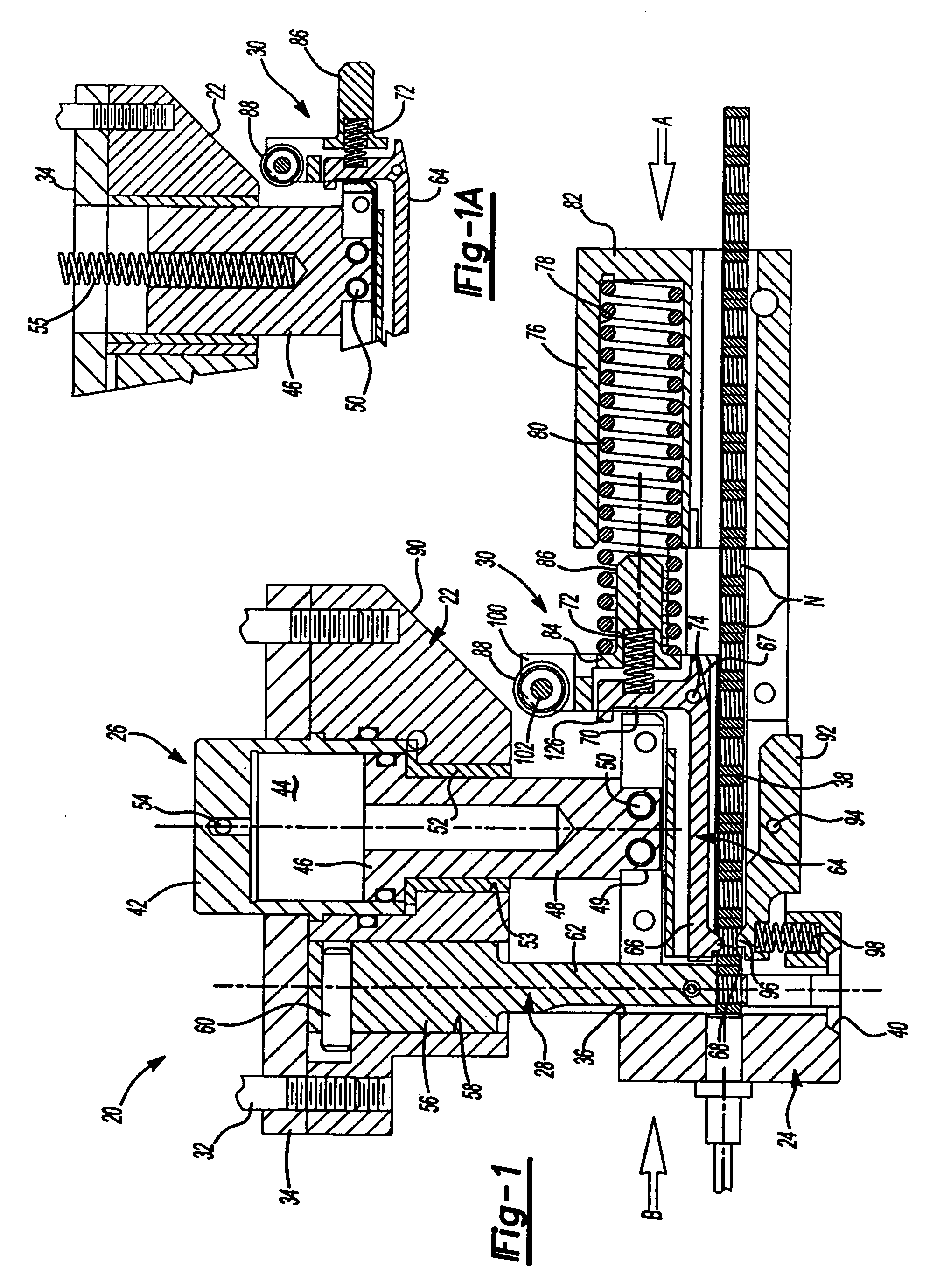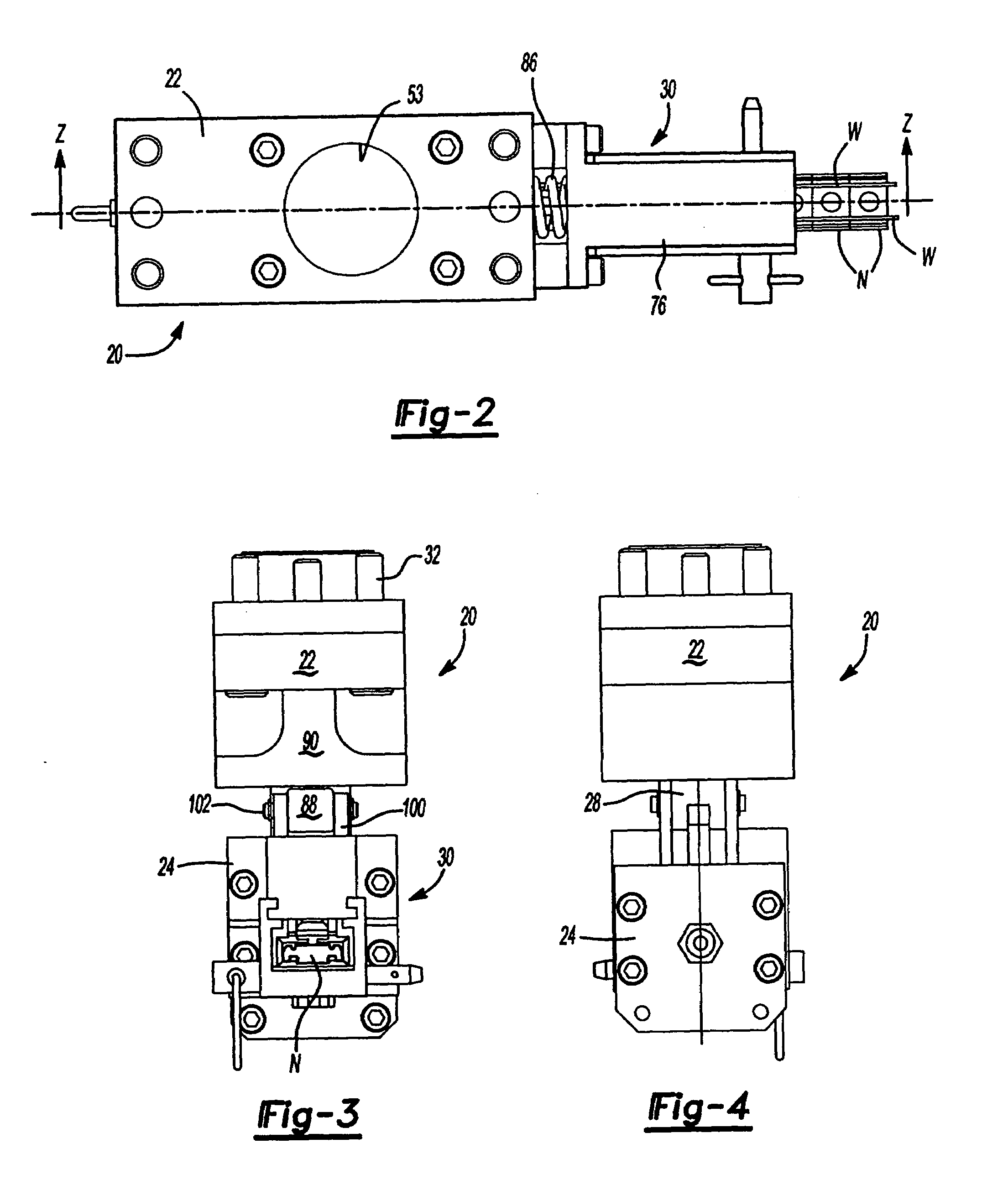Method of feeding and installing self-attaching nuts
a self-attaching and nut technology, which is applied in the direction of de-stacking articles, instruments, manufacturing tools, etc., can solve the problems of linkage breakage and improper control of the travel of the feed pawl
- Summary
- Abstract
- Description
- Claims
- Application Information
AI Technical Summary
Benefits of technology
Problems solved by technology
Method used
Image
Examples
Embodiment Construction
[0025]The embodiment of the fastener installation head 20 of this invention illustrated in FIG. 1 includes a base member 22, a nose member 24, a shank or guidepost assembly 26, a plunger 28 and a nut feed assembly 30. As set forth above, the base member 22 is generally attached to the upper die shoe or platen of a die press (not shown) by mounting bolts 32. In a typical application, a mounting or back-up plate 34 is provided between the base member 22 and the upper die platen (not shown). Shims (not shown) may also be provided between the mounting plate 34 and the upper die platen.
[0026]The nose member 24 includes a plunger passage 36 and a transverse nut feed passage 38 which receives the fasteners, such as nuts “N,” from the feed mechanism 30 as described below. The plunger passage 36 may also include an explosion relief 40 which avoids jamming of the plunger passage if the die press is operated to install a second nut over a nut already installed in the panel as will be understoo...
PUM
| Property | Measurement | Unit |
|---|---|---|
| resilient | aaaaa | aaaaa |
| size | aaaaa | aaaaa |
| force | aaaaa | aaaaa |
Abstract
Description
Claims
Application Information
 Login to View More
Login to View More - R&D
- Intellectual Property
- Life Sciences
- Materials
- Tech Scout
- Unparalleled Data Quality
- Higher Quality Content
- 60% Fewer Hallucinations
Browse by: Latest US Patents, China's latest patents, Technical Efficacy Thesaurus, Application Domain, Technology Topic, Popular Technical Reports.
© 2025 PatSnap. All rights reserved.Legal|Privacy policy|Modern Slavery Act Transparency Statement|Sitemap|About US| Contact US: help@patsnap.com



